Many of us struggle to build a well-defined upper chest, especially when we’re limited to working out at home without access to gym equipment. The upper chest is often neglected in bodyweight routines.
Many people think bodyweight lower chest workouts aren’t as effective as their gym chest workout counterparts.
However, when you try the lower chest bodyweight workout routine that I will share with you, you will be completely convinced of its effectiveness.
This routine builds a bigger chest, improves posture, and increases pushing strength without requiring expensive gym equipment or membership.
After reading this blog post, you will have a plan to build your upper chest using only your body weight.
Let’s begin!
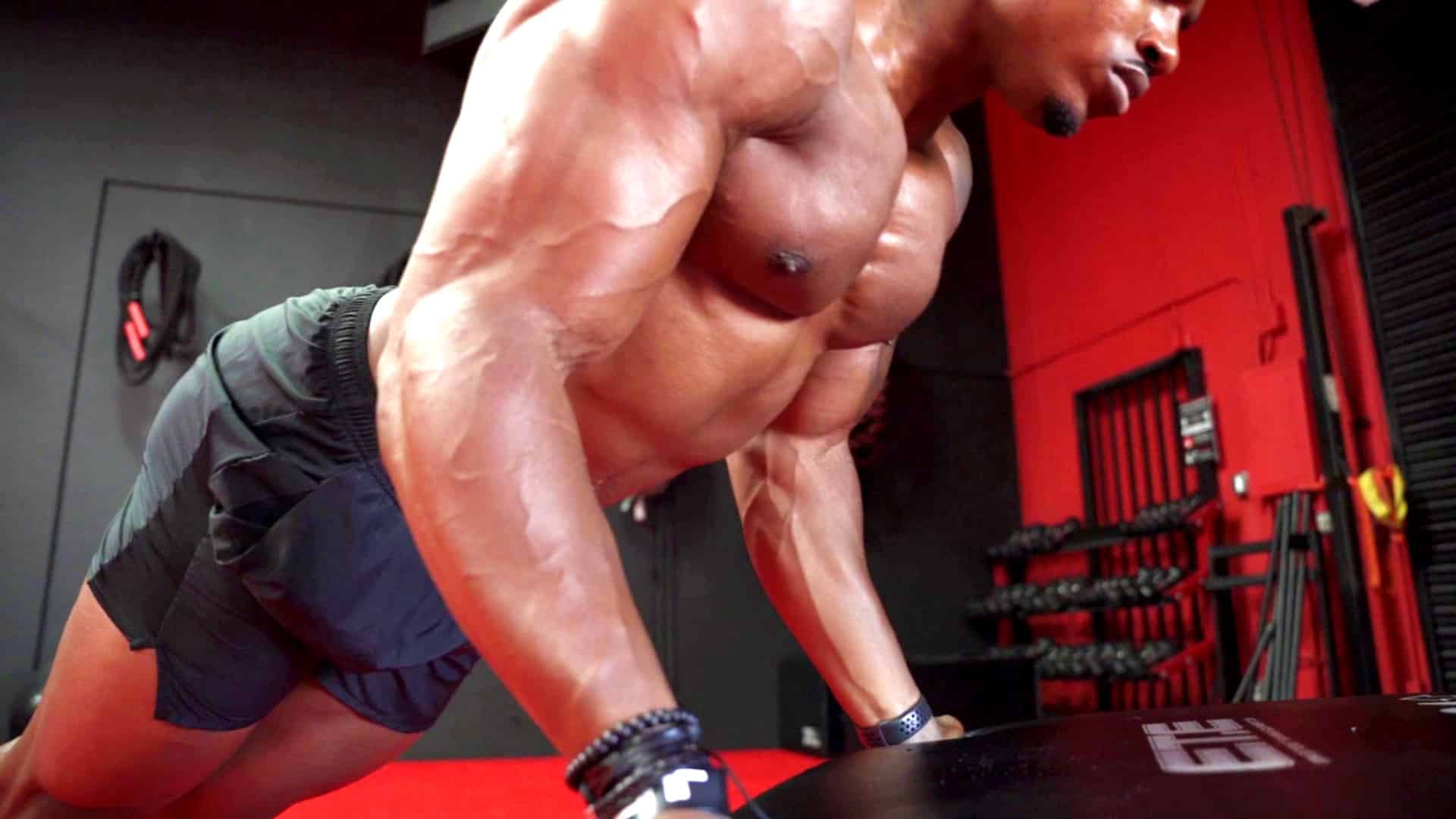
- 7 Best Bodyweight Lower Chest Exercises For Home
- 1. Incline Push-Ups
- 2. Reverse Grip Push-Ups
- 3. Stability Ball Push Up
- 4. Hindu Push Up
- 5. Medicine Ball Push-up
- 6. Chest Dip
- 7. Straight Bar Dip
- How to Work out Lower Chest at Home?
- At Home Lower Chest Workout Routines
- Beginner Bodyweight Lower Chest Workout Routine
- At-Home Lower Chest Workout Plan
- Best Push-Ups For Lower Chest That You Should Do At Home
7 Best Bodyweight Lower Chest Exercises For Home
Here Are 7 lower chest exercises that require no equipment or just a slight modification to target your lower pectorals.
1. Incline Push-Ups
Pushups are a great multi-functional exercise because they work the entire upper body. Push-ups can be performed with many variations to create different muscular recruitment patterns.
Performing push-ups at an incline angle will focus more on the lower chest.
Incline push-ups are easier than normal push-ups because they have to be done at an incline angle. The push will be 50% easier if you have a 45-degree incline angle with your feet below your head, than if you have a horizontal angle.
The incline surface means that more of the lower chest, shoulder muscles, and triceps are used in incline push-ups.
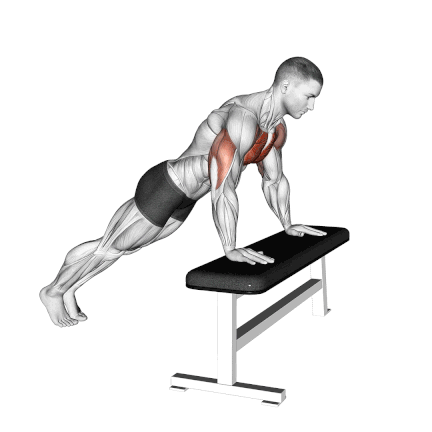
How To Do
- Stand at a comfortable distance from the bench.. Place the hands shoulder-width apart on the bench.
- Adopt an incline plank position by extending the legs backward until the legs and back form a straight line.
- Slowly bend the arms to lower the chest toward the bench.
- Remember to keep the elbows and arms close to the body.
- Slowly push the body away from the bench, extending the arms but maintaining a slight bend in the elbow.
2. Reverse Grip Push-Ups
The reverse grip push-up is a fun and great variation of the standard push-up. You do it with your fingers facing your feet (your palms outward).
This makes your lower chest and front shoulders work extra hard during the movement.
For an easier variation, you can do the Reverse grip push-ups on the knee or an inclined surface.
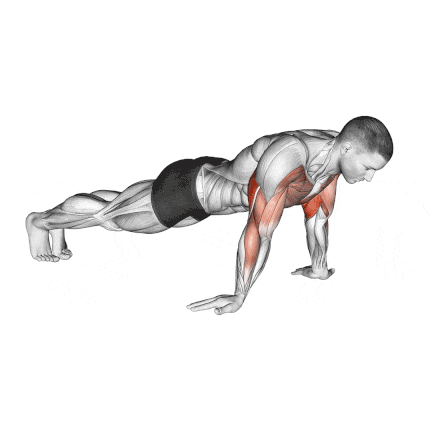
How To Do
- Get down into a press-up position with your hands placed so your fingers point toward your toes.
- Keep your neck in a neutral position to avoid stressing and hurting it.
- Take a big breath in and slowly start to bend your elbows. Do not let your elbows move outwards (away from your body).
- Lower yourself until you are about an inch from the floor.
- Pause the movement when you are at the bottom for a second.
- Push through your palms like you would try to push the floor away from yourself, extending the arms but maintaining a slight bend in the elbow.
- Repeat this for however many repetitions you wish to perform.
3. Stability Ball Push Up
Using a Swiss ball (or exercise ball) can add an extra element to push-ups. The unevenly inclined surface increases the difficulty, making it perfect for hitting the lower chest.
You’ll have to focus on maintaining your balance on the ball, which allows you to work more than you would be performing the standard, floor-bound version of the classic move.
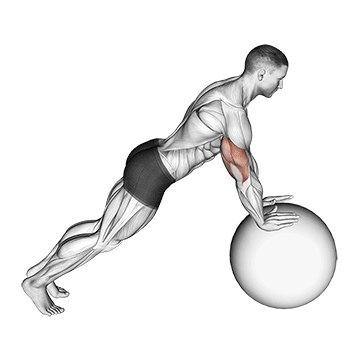
How To Do
- Lay on the stability ball. Place your hands on the ball at the sides of your chest, shoulder-width apart.
- Lean forward so that your chest is directly over the ball.
- Do not let your lower back sag or your butt rise. Ensure your body is straight and rigid. Keep your glutes and core muscles contracted.
- Push your body up, until your arms are almost straight (do not lock your elbows). Pause here for a second.
- Breathe out and extend your arms to bring your upper body back to the starting position.
Know More: 25 Different Types Of Push-Ups
4. Hindu Push Up
The Hindu push-up is a traditional Indian-style exercise practiced by wrestlers. Each repetition involves going from a downward dog position to a cobra pose and swooping by holding the head and body close to the ground.
The arms would be straight at the exercise’s beginning and end. This variety of push-ups has existed for centuries among Indian martial artists. It works on core strength, shoulders, hips, and triceps.
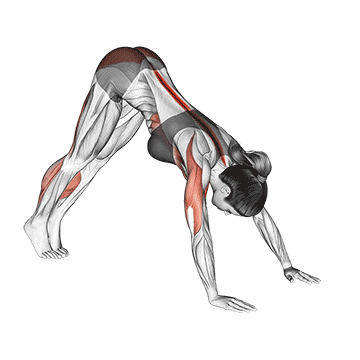
How To Do
- Start in a downward dog pose, with your hands shoulder-width apart, your body in a V shape, and your feet hip-width apart.
- Bend your elbows and lower your chest until it’s just above the floor, going into low plank pose.
- In a scooping motion, lift your head upward while arching your lower and upper back, then go into cobra pose.
- You do not need to reverse back through the sweeping, arching motion to return to the starting position.
- Push back into the starting position.
5. Medicine Ball Push-up
The close-grip medicine ball push-up is an upper-body strength exercise that targets the chest and shoulders, with slightly more emphasis on the triceps. The ball’s unstable surface also helps improve core strength and stability.
The movements you’ll learn are highly functional. You’ll get bigger and stronger; you’ll get more power, and your bones and your core will get stronger.
Resistance can be reduced by performing push-ups with knees bent on the floor or placing a medicine ball on a higher platform.
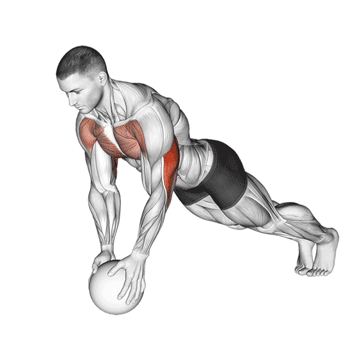
How To Do
- Get in the standard push-up position with your hands on a medicine ball directly beneath your chest.
- Your left thumb and forefinger should touch your right thumb and forefinger.
- Do not let your hips sag during the movement.
- Bend your elbows to lower yourself in a controlled manner.
- Maintain a rigid core as your chest moves toward the top of the ball.
- Hold for one to two seconds before breathing out, extending your arms, and pushing your body back to the starting position.
- Focus on maintaining balance during both phases.
6. Chest Dip
Chest dips are among the most effective bodyweight compound workouts for the upper body, especially for the pushing muscles in the lower chest and triceps.
When performed on narrow parallel bars with elbows back and your torso upright, the dip becomes one of the best exercises for building triceps mass.
Dips can be modified at home using two stable chairs or any stable elevated surface.
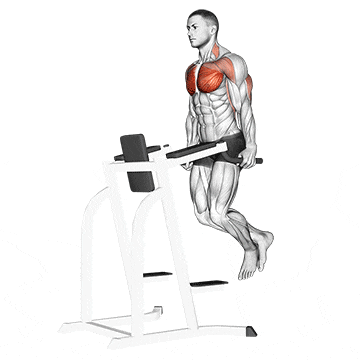
How To Do
- Grasp the dip bars with your arms extended and locked. Keep your body as vertical as possible to keep the emphasis on the triceps and away from the chest.
- Keep your elbows as close to your sides as possible as you bend them to lower your body down until your upper arms are about parallel to the floor.
- Press your hands forcefully into the bars to extend your arms and raise your body back up.
- Repeat for the recommended number of repetitions.
7. Straight Bar Dip
It’s an advanced variation of the traditional dip that targets the lower chest, triceps, and shoulders. The more you lean, the more you’ll target your chest rather than your triceps.
Unlike traditional parallel bar dips, the straight bar requires excellent core stability and shoulder engagement.
As you’ll be moving your full body around, these drills will improve your metabolism, help you burn more fat, and help you achieve that mean and lean look.
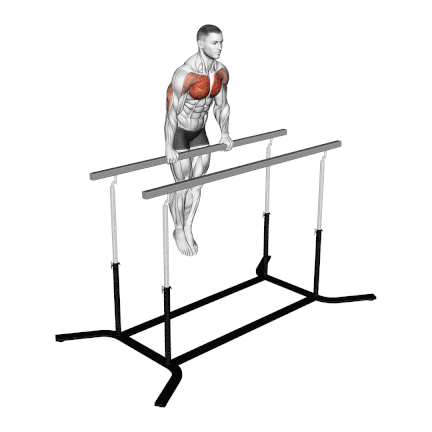
How to Do
- Position your hands slightly wider than shoulder-width apart with a pronated grip (palms facing forward).
- Lift yourself, so your arms are fully extended and your body slightly leans forward.
- Slowly lower your body by bending your elbows until your upper arms parallel the ground.
- Extend your arms to return to the starting position.
How to Work out Lower Chest at Home?
Now, your home is your gym. The bodyweight above exercises provide a remarkable means to target your lower chest without expensive equipment.
Don’t WORRY.
Let me share some tips for building your lower pecs in your living room and turning your furniture into fitness equipment.
- Dips: No parallel bars? No problem. use two sturdy chairs or the corner of my kitchen counter.
- Incline Push-Ups: Use a sofa or low table. The lower the surface, the more challenging it becomes.
- For medicine ball: Basketball or soccer or a ball filled with sand.
- For a straight dip bar, you can use the kitchen countertop corner or playground equipment at a local park.
Remember, safety comes first. Always test the stability of your makeshift equipment before using it in your workout.
Once you’ve mastered these basic substitutions, get creative. There’s a world of possibilities for home workouts.
At Home Lower Chest Workout Routines
Here’s the routine that gives you the best results:
- Pick 2–3 exercises per session.
- Do3-4 sets of each
- Hit 10–15 reps per set (adjust based on your fitness level)
- Train your chest 2–3 times a week
You can be more creative once you learn how to make fundamental changes.
Beginner Bodyweight Lower Chest Workout Routine
| Exercise | Sets | Reps | Rest |
|---|---|---|---|
| Incline Push-Ups | 4 | 12 | 60 sec |
| Chair Dips | 3 | 10 | 60 sec |
| Hindu Push-Ups | 3 | 15 | 60 sec |
At-Home Lower Chest Workout Plan
| Exercise | Sets | Reps | Rest |
|---|---|---|---|
| Incline Push-Ups | 4 | 10 | 60 sec |
| Reverse Grip Push Up | 3 | 12 | 45 sec |
| Dips | 3 | 8-10 | 60 sec |
| Close Grip Push-Ups | 4 | 8 | 45 sec |
To avoid plateaus, I’m always looking to level up. Try these:
- Increase reps or sets over time
- Shorten rest periods
- Slow down each rep
- Add a pause at the bottom of each rep
- Try more challenging variations
Best Push-Ups For Lower Chest That You Should Do At Home
References
- Trebs, Arthur & Brandenburg, Jason & Pitney, William. (2010). An Electromyography Analysis of 3 Muscles Surrounding the Shoulder Joint During the Performance of a Chest Press Exercise at Several Angles. Journal of strength and conditioning research / National Strength & Conditioning Association. 24. 1925-30. 10.1519/JSC.0b013e3181ddfae7.

Manish is a NASM-certified fitness and nutrition coach with over 10 years of experience in weight lifting and fat loss fitness coaching. He specializes in gym-based training and has a lot of knowledge about exercise, lifting technique, biomechanics, and more.
Through “Fit Life Regime,” he generously shares the insights he’s gained over a decade in the field. His goal is to equip others with the knowledge to start their own fitness journey.

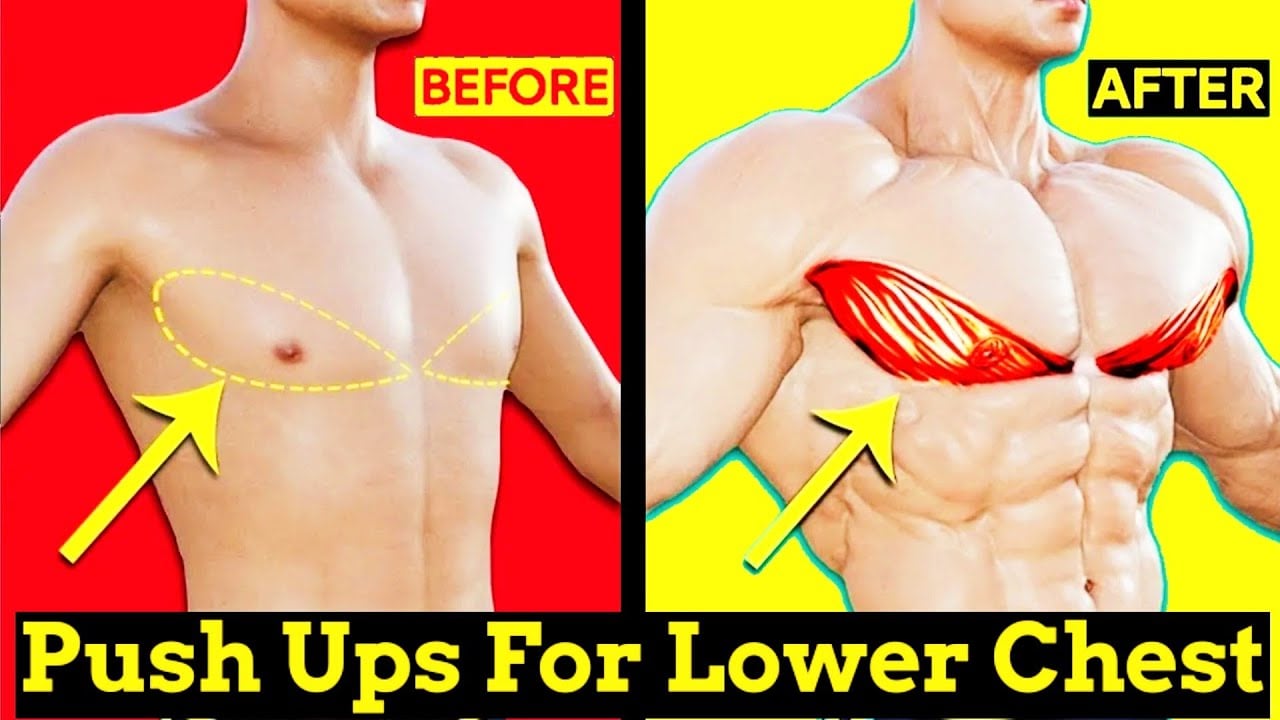
I’ve been experimenting with different home workout routines, from HIIT to yoga, and it’s impressive how much you can achieve without a gym. Posts like this give me new ideas to keep things interesting